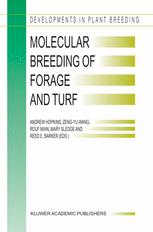

Most ebook files are in PDF format, so you can easily read them using various software such as Foxit Reader or directly on the Google Chrome browser.
Some ebook files are released by publishers in other formats such as .awz, .mobi, .epub, .fb2, etc. You may need to install specific software to read these formats on mobile/PC, such as Calibre.
Please read the tutorial at this link: https://ebookbell.com/faq
We offer FREE conversion to the popular formats you request; however, this may take some time. Therefore, right after payment, please email us, and we will try to provide the service as quickly as possible.
For some exceptional file formats or broken links (if any), please refrain from opening any disputes. Instead, email us first, and we will try to assist within a maximum of 6 hours.
EbookBell Team

4.8
44 reviewsForage and turf are the backbone of sustainable agriculture and contribute extensively to the world economy. The fast-paced advancement of cellular and molecular biology provides novel methods to accelerate or complement conventional breeding efforts. This book contains the most comprehensive reviews on the latest development in applications of molecular techniques for the improvement of forage grasses, forage legumes and turf grasses. Detailed accounts and future opportunities in molecular breeding of forage and turf, from gene discovery to development of improved cultivars, are described in the book. Almost all relevant areas are explored in detail, including tolerance to biotic and abiotic stresses; flowering control; plant-symbiont relations; breeding for animal, human and environmental welfare; molecular markers; transgenics; bioinformatics; population genetics; genomics of the model legume M. truncatula; field testing and risk assessment as well as intellectual property rights. This book will be of interest to researchers in both academia and industry who are involved in forage and turf improvement. It will be especially important to breeders, molecular biologists, geneticists, physiologists and agronomists.